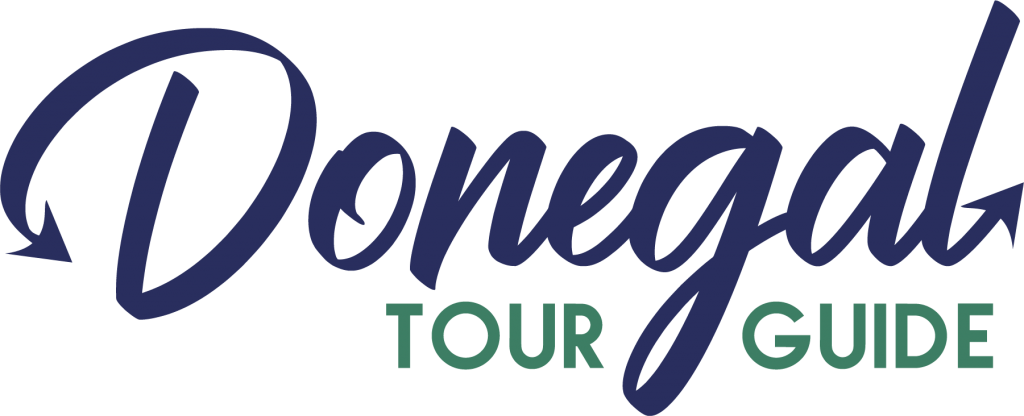Beginner’s Guide to Tracing Donegal Ancestors
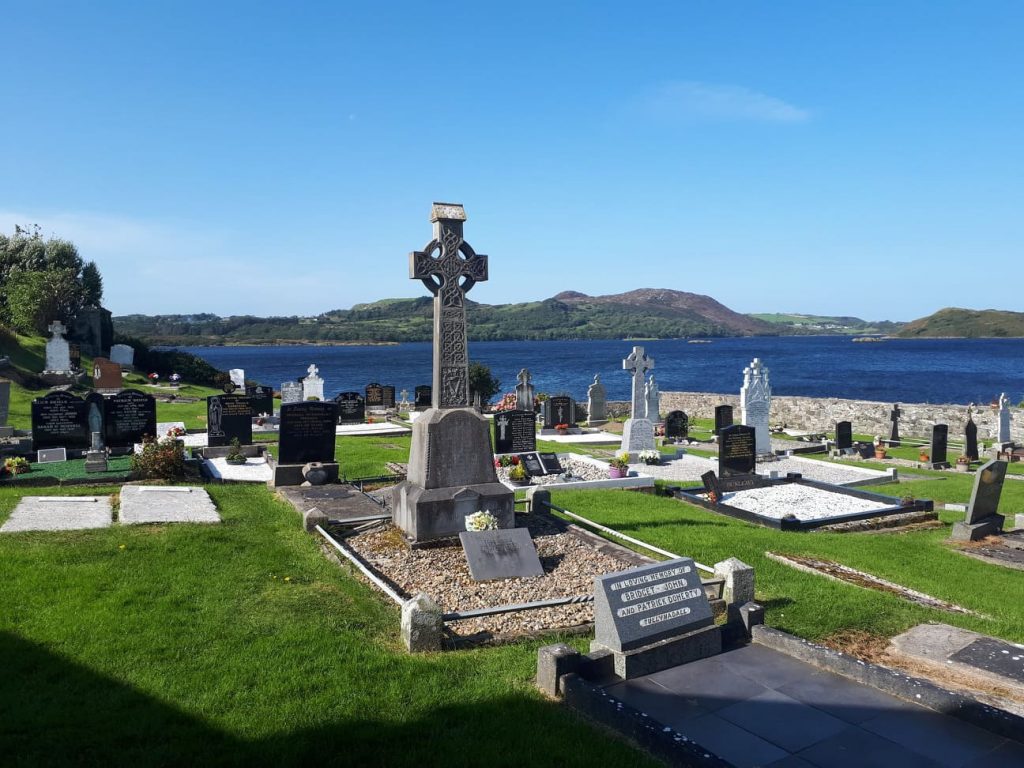
Ireland’s Global Diaspora
Ireland’s rich history has generated a massive diaspora, with almost 10 million people emigrating since the 1700s. In the United States alone, 33 million people, constituting 10% of the population, identify as having Irish descent, a staggering number when compared to Ireland’s current population of under 6 million. This guide focuses on tracing Donegal ancestry, offering insights into the resources and methods that can help unveil the hidden chapters of your family history. However, many of the resources featured can be used for research into Irish ancestors from other counties in Ireland.
Interest in Irish ancestry has always been great and thankfully, this has not gone unnoticed by the public sector in both the Republic of Ireland and Northern Ireland. It’s now easier than ever to trace your Irish connections back as far as the middle of the 1800’s online and mostly, for free.
I am not a genealogist but my American guests tracing their Donegal ancestors often tell me of their favourite methods and websites that bring them this far and I am delighted to share these with you.
Exploring Your Donegal Heritage
Step 1 – Interview Family Members
Before you visit a genealogy website or library, talk to your older family members to find out as many surnames, maiden names, parishes, townlands etc. These will be invaluable in beginning your search for your Donegal ancestors. Consulting old photographs is also advisable as names and dates may be noted on the back. Pull out any newspaper clippings, old letters and family bibles that may be in your family’s possession.
The main things to establish are approximate dates of births, marriages and deaths, as well as names (forenames and related family names) and places of residence. Religious denomination is also very useful in determining which records are relevant to your research.
Step 2 – Search Census Records
Census records provide very useful information for tracing immigrants to the US and Canada. The 1900 US census and 1911 Canadian census sought information on the year of immigration, number of years residence and citizenship status of each person recorded. They are a great starting point for Irish Americans tracing their Irish ancestors. Ancestry.com offers free online searches of the 1900 US census and 1911 Canadian census.
The earliest surviving complete Irish census records are from 1901 and 1911. The Donegal County Library holds microfilm copies of the returns for County Donegal and these are arranged by District Electoral Division (DED) and townland. However, if you are researching your Donegal genealogy from outside Ireland, the National Archives of Ireland census website is a free digitised record of the 1901 and 1911 census returns. The Search facility is very user-friendly and also includes any surviving (incomplete) records as far back as 1821. The digital records are supported by images of the original documents, so you can see your ancestor’s handwriting and signature just as well as if you visited the Donegal County Library or National Archives in person. However, do bear in mind that you’re relying on the literacy and knowledge of the person who completed the survey. I’ve heard tales of a Donegal ancestor being 10 years younger in 1911 than they were in 1901!
In 1911 a significant new question was added which required married women to state the number of years they had been married, the number of their children they had born alive and the number still living. This information may help locate a marriage record or narrow down the search for death or emigration records.
Step 3 – Explore Parish Registers
Catholic Parish Registers
Prior to the 1901 census, the most useful records in existence for the 1740’s to the 1880’s are the Catholic Parish Registers. During this time, the Irish people were usually servants, labourers or farmers, who didn’t own their own land or have their names on any deeds. Aside from the Parish Registers, there may be no other record of their lives. Microfilm copies have been collated and digitised and are available to view online on the NLI’s website.
However, the parish registers are not indexed so you will need to know the name of the Catholic parish and the relevant year. Whilst this is a fantastic resource and evidently a lot of time and effort has gone into producing it, the handwriting is often difficult to read and some headings etc. are in Latin.
Indexed Catholic parish registers are available on www.findmypast.ie (limited free subscription), www.ancestry.co.uk (subscription) and www.rootsireland.ie (subscription). These have transcriptions of the registers and in my opinion, worth the small investment where applicable. Find My Past has a handy 5 Essential Tips for Searching Our FREE Irish Catholic Parish Registers worth checking out for some guidance.
Church of Ireland Registers
The Church of Ireland was Ireland’s state church until 1870 and after disestablishment, parish records before that date were considered public records. As a result, a large number were in the Public Record Office and destroyed in the Irish Civil war in 1922. The largest collection of original registers is in the Representative Church Body Library in Dublin, which also maintains an online listing of what was destroyed and what survived. The Public Record Office of Northern Ireland (PRONI) has an excellent collection of microfilm of records of all denominations in the nine counties of Ulster listed in its Guide to Church Records.
Some records are retained in individual parishes. A small number of parish registers have been digitised and are available to view on the Anglican Record Project and the Online Parish Records. (This digital record is a work in progress.)
Church of Ireland Parish Registers for Inver, Mountcharles, Killaghtee and Killybegs are held on microfilm in Donegal Central Library.
Presbyterian Registers
These records are held in three main locations: in local custody, in the Presbyterian Historical Society and in the PRONI. The Donegal Central Library holds hard copy indexes for many local presbyterian Churches for various dates from 1821-1998 in some cases.
Methodist Registers
Records of Methodist births, marriages and deaths which took place prior to about 1820 are found in Church of Ireland registers. For details of surviving records after this date, contact the Methodist church in the area closest to your area of research. PRONI holds a county-by-county listing of surviving registers for Northern Ireland.
Quaker Registers
These records are held in Libraries of the Society of Friends in Dublin and Lisburn. An extensive number of Irish Quaker records, including birth, marriage and death records, and records of congregational meetings, have been digitised and are available on www.findmypast.ie.
Jewish Registers
Enquiries about Jewish records should be addressed to the Irish Jewish Museum.
Step 4 – Consult Emigration Records
Information about emigrants was usually gathered at the destination rather than the place of departure.
USA and Canada
From 1855 to 1890, Castle Garden was the official immigration centre in the USA. Ellis Island opened in 1892 and its website has a free online database recording the 22.5 million arrivals to New York between 1892 and 1924. The subscription website www.ancestry.com also holds records of emigrants who arrived at the port of New York from 1820 to 1957.
Useful links for these records are:
Ellis Island Passengers Gold Form (1892-1924)
All New York Passengers (1820-1957)
New York Passengers (1820-1891)
Until Canada became a nation state in 1865 (prior to this Canada was known as British North America), there was no official requirement to make or keep information about immigrants from the British Isles. Information about records for emigrants to Canada from 1865 onwards is available in the Library and Archives Canada. An extensive collection of Canadian immigration records is available on www.ancestry.com.
Australia
Immigration has been a central part of Australian history and many records exist for those transported as fare-paying passengers, ‘assisted’ migrants, members of a ship’s crew, in military or naval service, or as convicts. The National Library of Australia is a great starting point for locating information on Irish ancestors who emigrated to Australia.
Step 5 – Investigate Property Records
Admittedly, as a private tour operator, these records are the most fun for me. They can be extremely helpful for identifying a location on today’s maps, to walk in the footsteps of your ancestors.
Griffith’s Primary Valuation was the first standard valuation of all real property in Ireland and lists householders and lessors by county, townland and parish between 1847 and 1864. Donegal Central Library holds a full set for County Donegal and it is also fully searchable online for free here.
The Valuation Revision Books which are a continuation of Griffith’s Primary Valuation provide details of changes in holdings from the original valuation to the present day. The Revision Books covering Northern Ireland between 1864 and 1933 have been digitised and are freely available on the PRONI website. The Revision Books for the Republic of Ireland including County Donegal are available at the Valuation Office in Dublin.
The Tithe Applotment Books were compiled between 1823 and 1837 as a survey of land in each civil parish to determine the payment of tithes (a religious tax). Unlike Griffith’s Valuation they do not cover cities or towns.
The Tithe Applotment Books for the Republic of Ireland are available online here. (Those for Northern Ireland are available on microfilm at the National Library of Ireland.) The search facility is very user friendly and you just have to read through the handwritten records then to find your exact family name.
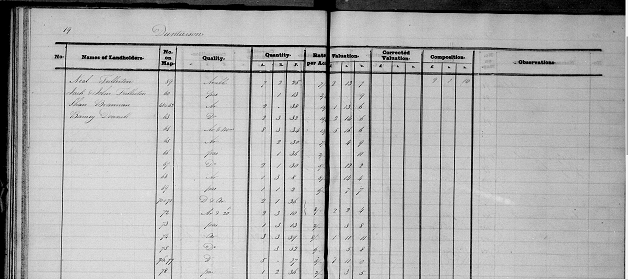
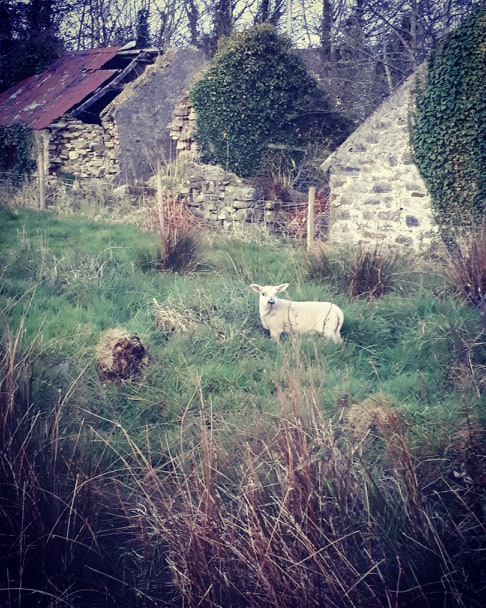
If you happen to know that your ancestors were traders or business people, Pigot’s Directory (1824) and Slaters’s Directory (1846) list descriptions of towns and cities, post office information and show the names of nobility and gentry living in or close to the town. The traders of each town are arranged according to their trade.
Step 6 – Examine Grave Headstones
Alongside homesteads, graveyards feature high on my private Donegal tours. Memorial inscriptions can detail several generations of a family, dates of birth and death, and even place of residence. However, often only more prosperous families erected gravestones in the 18th and 19th centuries but future generations may have added them later. Irish Graveyard Surveyors provides a fantastic record of all the graveyards in Ireland with an intuitive search facility and a photograph of the headstone. The corresponding information boards at graveyards assist when visiting in person.
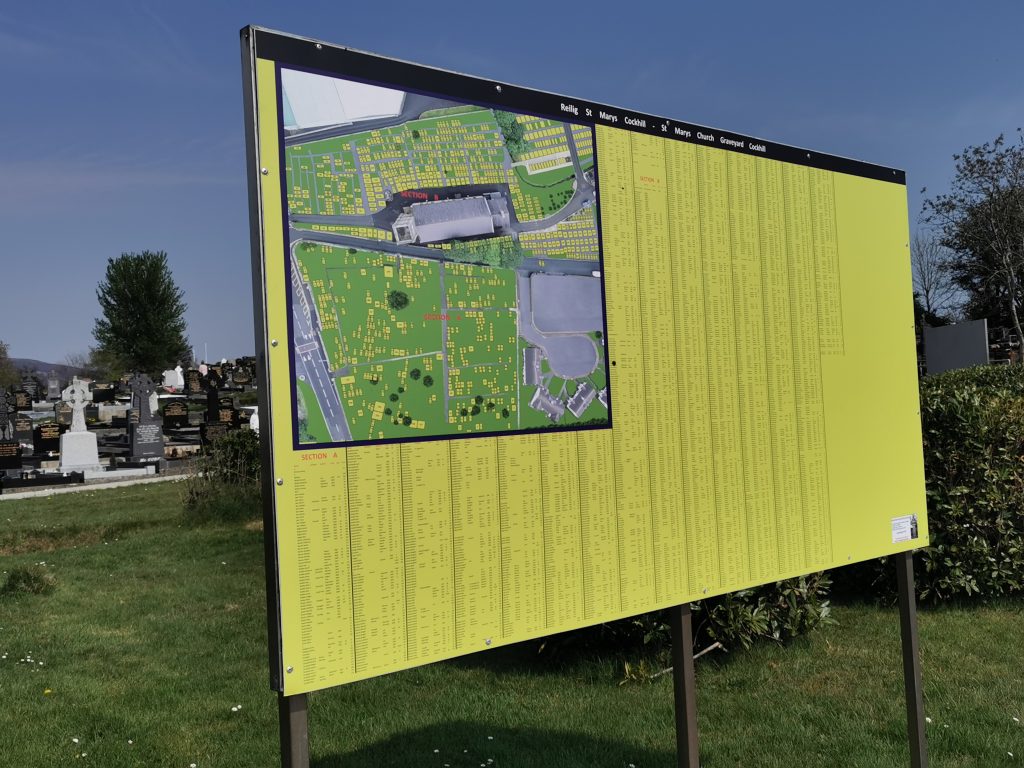

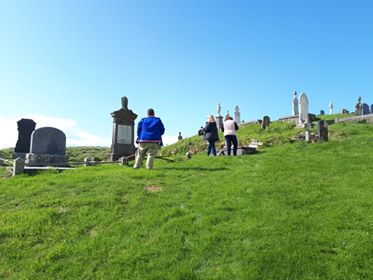
There are so many more resources, from prison records, military records, newspaper archives and much more. This guide is simply meant to get you started on your Donegal ancestry research. If you don’t fancy the DIY approach or are hitting brick walls when searching for information, get in touch and I’ll be happy to recommend local genealogists that can assist. Once you’ve identified your ancestors’ townlands and their eternal resting places, book a private Donegal tour with me to visit in person.
Good luck with tracing your Irish heritage, we look forward to welcoming you home.
Sources
askaboutireland.com
failteromhat.com
ancestry,com
findmypast.com
Library & Archives Canada
https://www.failteromhat.com/
NLI Family History Research
Public Record Office of Northern Ireland
Valuation Office
The National Archives of Ireland
National Library of Australia
Irish Graveyards
NLI Family History Research
Public Record Office of Northern Ireland
Valuation Office
The National Archives of Ireland
National Library of Australia
Irish Graveyards
